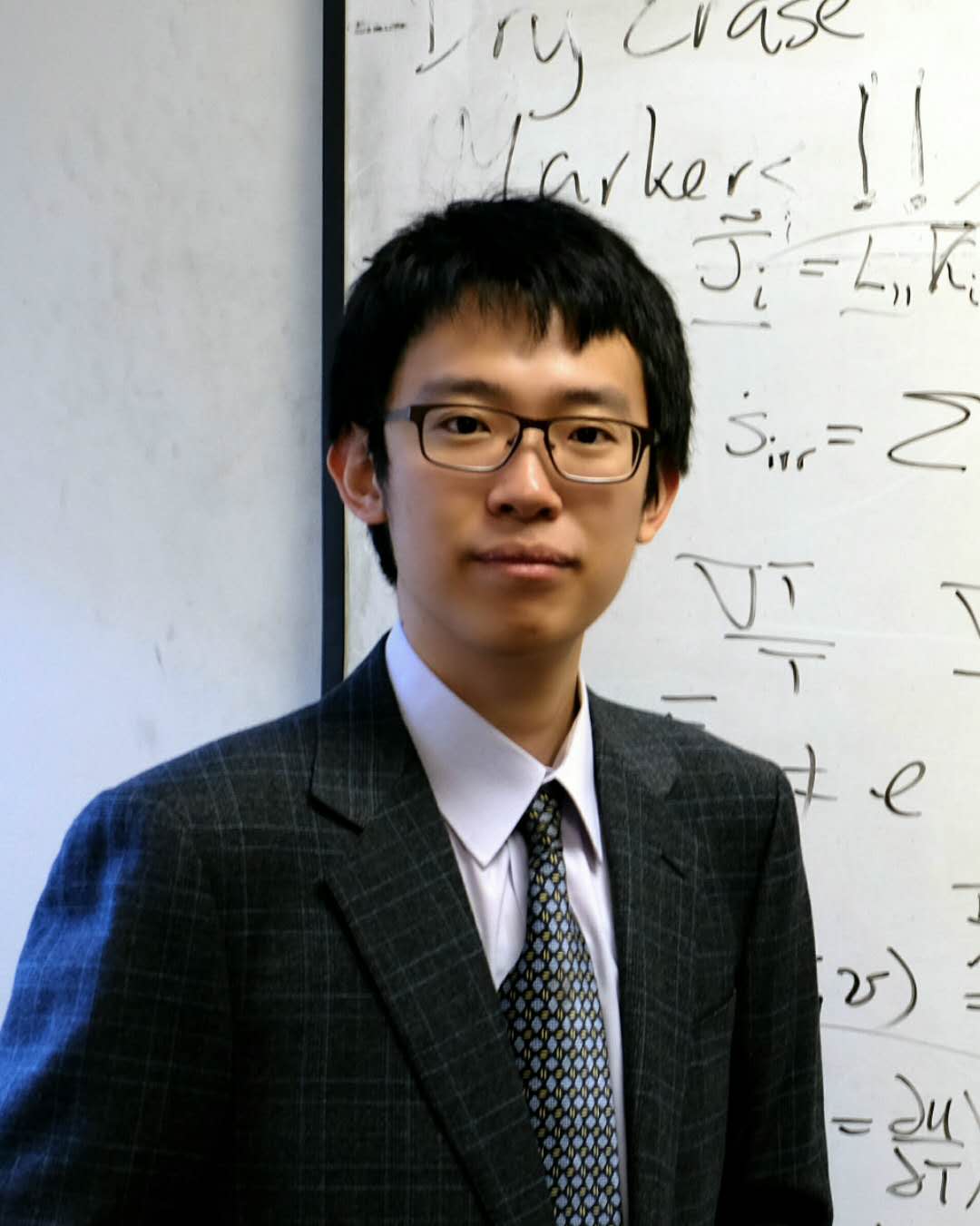Dr Guanchen Li
- Lecturer (Systems Power & Energy)
email:
Guanchen.Li@glasgow.ac.uk
pronouns:
He/him/his
Biography
I am a Lecturer in Thermodynamics and Multiscale Engineering and a member of the Energy and Sustainability Group within the Systems, Power & Energy (SPE) Research Division of the James Watt School of Engineering. I joined the School in 2022.
I was a postdoctoral researcher in the Department of Engineering Science (2017-2021) and a Stipendiary Lecturer of Engineering Science at St Peter’s College, University of Oxford (2021). From 2018 to 2021, I participated in two projects of the EPSRC Faraday Institution: Solid-state battery (SOLBAT) and Multiscale (MSM). I worked on continuum transport models to study the failure mechanism of solid-state lithium-ion batteries.
Prior to this, I was a postdoctoral researcher at Virginia Tech (2016) working on density functional theory. My doctoral research focused on the fundamental theory and modelling of far-from-equilibrium phenomena (e.g., chemical reaction, heat and mass diffusion) using a novel nonequilibrium thermodynamic framework named steepest entropy ascent quantum thermodynamics (SEAQT).
Education:
- 2015 PhD in Mechanical Engineering, Virginia Tech, USA
- 2011 BS in Physics (dual degree in Economics), Peking University, China
Research interests
I am interested in modelling nonequilibrium processes – e.g., reaction, diffusion, heat transfer, phase transition, etc.– in devices for energy storage and conversion. My experience ranges from the quantum level to the device level with applications including batteries, fuel cells, engines, and electronic devices. My research covers fundamental theories, numerical algorithms, models and practical applications.
I currently focus on batteries modelling. We use Newman’s concentrated solution theory to simulate battery performance and investigate battery failure and degradation. This framework is widely used in both industrial companies and academic institutions for battery design and simulation. We apply this framework to study the electrochemomechanics in batteries – i.e., the coupling of solid mechanics and electrochemistry. Our goal is to exploit multiscale modelling (from materials to devices) to advance the design, manufacturing and control of the battery. We link computational technology to practical battery engineering. We collaborate widely with the researchers in the areas of applied mathematics, physics, material sciences, and control engineering.
Our model is used to:
- predict the performance of batteries including next-generation designs (e.g., solid-state batteries);
- explain the failure mechanism based on the experimental observation (e.g., tomography);
- interpret the data of battery testing (e.g., electrochemical impedance spectroscopy); and
- support the techno-economic analysis of battery technology.
Current topics of interest include:
- physics-based models for battery design and battery management system;
- predictions of history-dependant performance of commercial batteries (e.g., voltage hysteresis in electrode materials, LiC6 and LiFePO4);
- failure and degradation mechanism of batteries;
- next-generation batteries using solid electrolytes, ionic-liquids, etc.;
- interpretation of battery testing, e.g., electrochemical impedance, acoustic test, etc.; and
- thermal management in batteries.
Another aspect of my research is more theoretical. I am looking into the entropy generation in the far-from-equilibrium realm, where temperature and pressure cannot be defined. Our framework, Steepest-Entropy-Ascent Quantum Thermodynamics (SEAQT), describes entropy generation as probability redistribution among quantum microstates. The equation of motion predicts the system evolution using the maximum-entropy-generation principle. This framework can incorporate quantum energy eigenlevels into meso-/macroscopic dynamics and provide an alternative approach for modelling coupled irreversible phenomena.
Current topics of interest include:
- materials in meta-equilibrium phases;
- heat and mass transfer in nanoscale, electron-phonon coupling;
- reaction and charge transfer at the interface; and
- complex reaction network.
Supervision
I am looking for students interested in applying physics-based models to solve practical problems in energy storage systems, e.g., batteries. Students can also collaborate with experimentists in battery testing and/or material characterization.
Students with a background in engineering, physics, applied mathematics, material science, or computational science are welcomed. Good Coding ability is highly preferred.
Current areas of interest include:
- physics-based and/or statistics-based models for battery state-of-charge and state-of-health estimation;
- modelling battery failure using continuum mechanics and electrochemistry;
- developing new algorithms, reduced-order models and computational techniques for battery simulation; and
- modelling materials in energy systems using kinetic theory, Monte Carlo simulation, molecular dynamics, and density functional theory.
Potential projects include:
- thermal management of EV batteries;
- fast-charging of batteries;
- battery management in EVs or cyber-physics systems; and
- modelling acoustic/electrical testing of batteries.
If you would like to discuss about PhD opportunities, please feel free to contact me (Guanchen.Li@glasgow.ac.uk) with an academic Curriculum Vitae (CV).
- Ma, Miaorui
Low-Carbon Flexible Operations of Multiple Energy Systems - Morrison, Rory
Digital Twins for Offshore Wind Turbines: Physics-Based Model Updating for Improved Operations & Maintenance - Xu, Bo
Simulation and Performance Evaluation of a Battery-Powered Portable PCR Device for Point-of-Care Diagnostics



